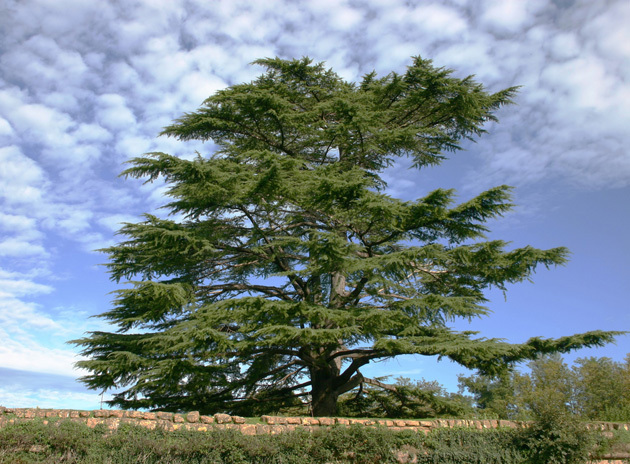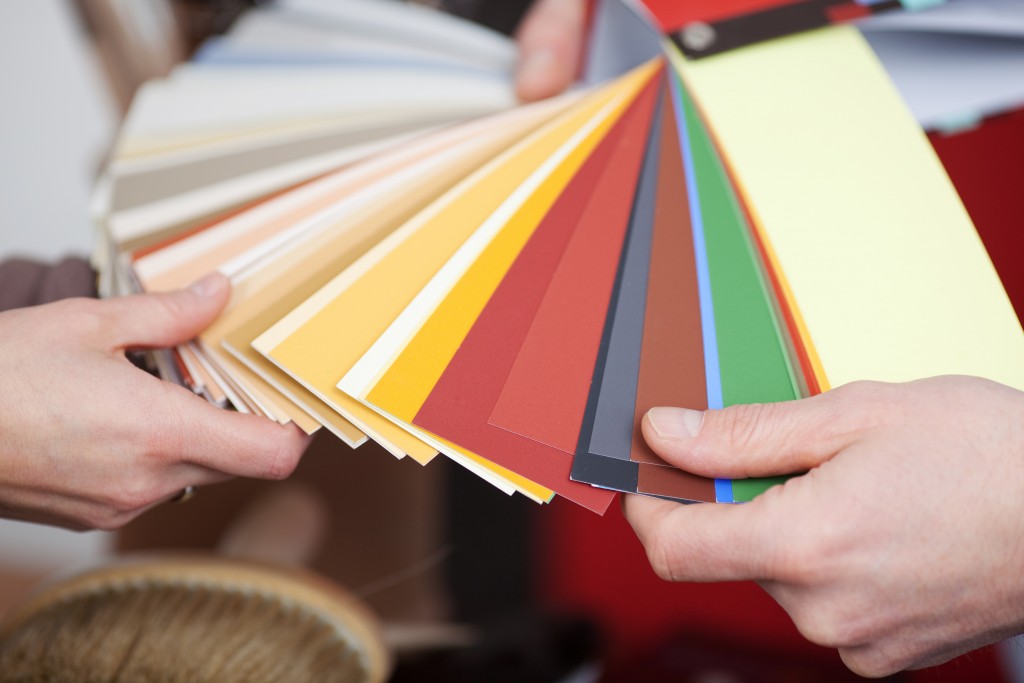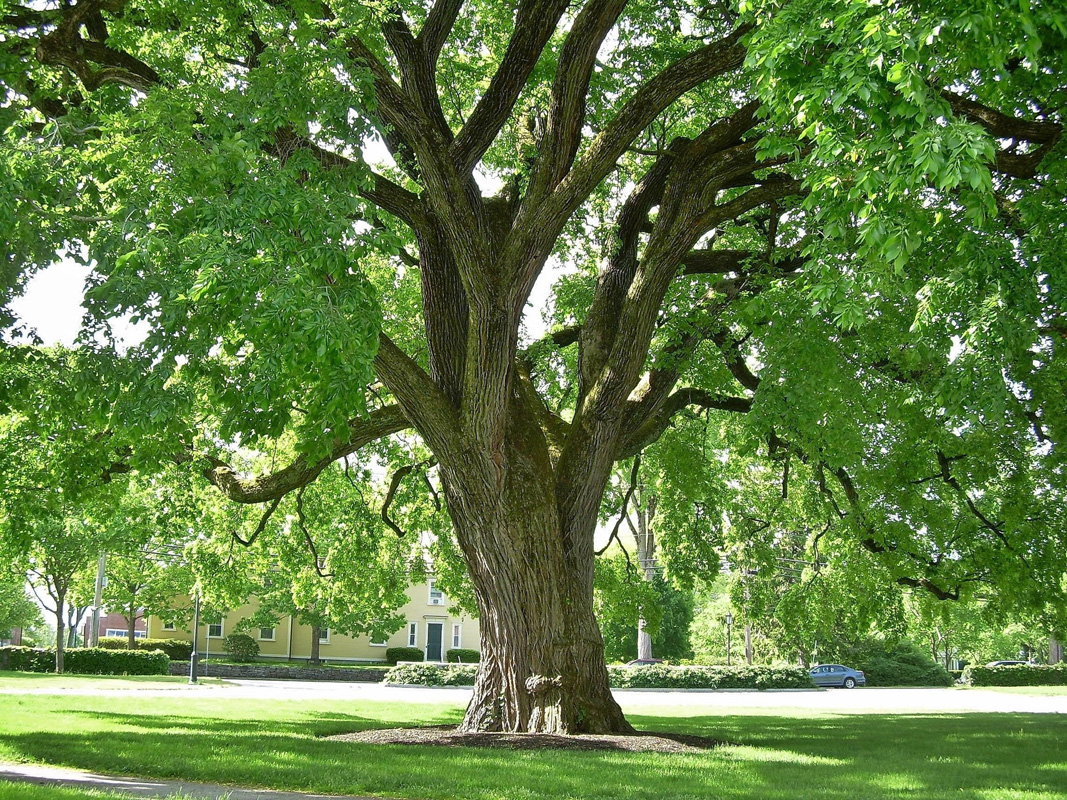Trees are among the most wondrous achievements of nature, creating not just clean air but also bountiful benefits. For example, people have cultivated persimmon trees for fruits and harvested oak trees for lumber for centuries. However, there are trees that have achieved mythical status because of their properties. Among these are cedar trees. These softwood trees have been grown in the Mediterranean region for ages and they have featured heavily in myths, religions and history before they were brought over to the New World.
In recent years, environmental efforts such as commitments to energy efficiency and natural conservation have aimed to protect cedar trees from further exploitation. Today, learn more about the characteristics, history and uses of these magnificent coniferous trees. Understanding the background of these fragrant and mighty plants may give you a newfound appreciation for them and spur you to take better care of the trees that grown in your own community.
What are Cedar Trees?

Cedar trees belong to a species of coniferous trees, meaning they’re related to pine trees and aspen trees. In terms of construction and furniture making, they’re also categorized as softwood. This means they’re usually easier to work with than material from hardwood trees, like maple or walnut. This is because cedar trees do not have the same vessels in them that transport water. They also grow more quickly than hardwoods, making them more environmentally sustainable.
The other defining characteristics of cedar include the following:
-
Physical Characteristics
Young cedar trees start as cones, just like most coniferous trees, and grow into vaguely conical shape in their earlier years. However, as the tree ages, it begins to lose this cone-shape. True cedars like the ones that grow in the mountains of Lebanon can grow to truly enormous proportions, reaching heights of over 126 feet in some cases. The taller they get, the flatter their crown becomes as the branches lengthen horizontally, eventually creating a signature tiered shape.
The bark of cedar trees has a dark gray color, which sometimes look like flat scales. Meanwhile, their needles have a blue sheen to them, usually mixed with deep green and hints of silver. The wood inside the tree is usually a deep red color, often compared to cherrywood or rosewood but with a distinct rusty or cinnamon-like color.
-
Signature Aroma
One of the most recognizable characteristics of both true cedars and New World cedars is their scent. The scent of cedarwood is often described as spicy and aromatic. This signature aroma comes from the resin, which also imbues the wood with its deep red, almost cinnamon-like, hue. Cedarwood resin has been used in aromatherapy as well as perfume making for years.
-
Resistances
Part of the reason ancient cultures almost venerated and prized the wood of cedar trees is because its chemical components give it superior resistances. According to experts such as the Environmental Protection Agency, cedar oil is labeled a pesticide with minimum risk. This means insects such as mites and moths won’t be able to survive prolonged exposure to it.
What are the Types of Cedar Trees?

There are many varieties of cedar trees, most of which can be classified into four families: Lebanese, Atlas, Cyprus, and Himalayan. These different types have distinctive features, such as their size and shape. Some types are comparable to the poplar tree species that are good for landscaping and shade, while others have a more coniferous look. Here are some common types of cedar trees:
North American Cedars
Cedars are often thought of as tropical trees because they’re associated with dry countries like Lebanon, but as coniferous trees, they can survive colder climates. North American cedars don’t have the same taxonomic properties as true cedars but are included in them nonetheless. These cedars include Alaskan yellow cedar, which grows in Canada and Alaska, Port Orford cedar, which grows in areas of California and Oregon, as well as incense cedar, often used to make pencils and furniture.
Old World Cedars
There are four species of true or Old-World cedars. These mighty trees are mostly protected because centuries of lumber harvesting have drastically reduced their populations. The two most recognizable types of true cedars. Deodar cedar grows in the western Himalayas, high up on the slopes, ensuring that these aren’t tropical tress. Their stands usually occur at elevations between 6,000 and 9,000 feet. The cedars of Lebanon are the most famous of cedar trees. These grow in the mountains of their namesake country and are among the most historic coniferous trees in the world.
Lebanese cedar (Cedrus libani)
This is the most common type of cedar tree in North America. It’s also one of the largest, up to 130 feet tall and 8 feet in diameter. These trees feature blue-green foliage and a pyramidal shape, with first-order branches growing vertically and second-order branches growing horizontally. Native to the Mediterranean region, the Lebanese cedar is drought-tolerant and can survive in many different climates.
Atlas cedar (Cedrus atlantica)
This type of cedar tree is native to North Africa. It’s smaller than the Lebanese cedar and grows up to 115 feet tall and 5 feet in diameter. Its branches form an open, irregular shape with a wide base and tapering top. Morocco has the highest concentration of Atlas cedars in the world.
Cyprus cedar (Cedrus brevifolia)
Another popular species, the Cyprus cedar, is native to Asia Minor and grows up to 85 feet tall. It is less common than the Lebanese and Atlas cedars due to its slower growth rate.
Himalayan cedar (Cedrus deodara)
The Himalayan cedar is native to the Himalayas and grows up to 160 feet tall. It has a wide-spreading, conical crown with spreading branches and sharp needles. Himalayan cedar has fragrant foliage and is popular for its beauty and aroma.
What is the History of Cedar Trees?

Cedar trees are an iconic part of the North American landscape, with their tall trunks and fragrant needles. They provide shade and shelter to wildlife and beauty to any yard or park. Whether you’re a homeowner looking for landscaping advice or a novice gardener searching for some tips, this comprehensive guide will help you learn about cedar trees.It will cover everything from popular tips for gardening and caring for your cedars to identifying different species and understanding their unique characteristics. With this information, you can ensure that your cedar tree remains healthy and beautiful for years!
When people talk about the role of cedar trees in history, they’re mostly talking about the fabled cedars of Lebanon. These trees are also known by their scientific name, Cedrus libani, and they have a history that stretches back thousands upon thousands of years. These softwood trees have touched history since the youngest civilizations began in the Middle East.
Trees of the Gods
One of the earliest mentions of cedar trees in history can be found in the ancient Mesopotamian epic poem known as the Epic of Gilgamesh. The poem dates back to approximately 2100 BCE and features the story of the mythical king of Uruk, Gilgamesh, on his quest for immortality. In the poem, Gilgamesh, along with his companion Enkidu, travels to a cedar forest to prove that he can surmount mortality. He overcomes and defeats the divine guardian of the forest and cuts the coniferous trees of the grove to prove his royalty and power.
Egyptian Aromatics
The ancient Sumerians weren’t the only civilizations to recognize the unique properties of their towering trees. The astringent and insect repellent properties of cedar trees were also used by the pharaonic civilizations of Egypt. Cedar oil was one of the important ingredients for mummification. Priests would supposedly inject the body with this aromatic oil to imbue with the smell as well as to ward away corruption. Sarcophaguses of the later periods of Egyptian history were also carved from the fragrant wood.
Biblical Mentions
Cedar has also been mentioned prominently in the Bible and the Talmud. According to the book of Leviticus, Moses recommended using the bark of cedar trees to cure skin diseases. David, the ancient king of Israel, had a house built of cedarwood. The great Temple of Jerusalem, built by David’s successor King Solomon, was said to have incorporated timber from the aromatic softwoods into its construction.
Lebanese Pride
Because of how intricately linked Cedrus libani is to the history and mythology of the reason, the country of Lebanon proudly features the tree on their flag and coat of arms. The country has sponsored various conservation efforts for the trees throughout the country. Forests of the fabled cedar trees are protected by both the government and their high elevations.
Step-By-Step Guide To Growing Cedar Tree
1. Choose the right location.
Choose an area with at least 6 hours of sunlight each day and well-drained soil. This will help your cedar tree to thrive.
2. Plant in spring or fall.
The best time to plant a cedar tree is in the spring or fall when the soil is moist, and the weather is cooler. Because cedar trees are sensitive to extreme temperatures, avoid planting them in the summer or winter.
3. Dig a hole.
Dig a hole twice the size of the cedar tree’s root ball. This will give the roots room to spread out and establish themselves. If the soil is clay-like, mix it with some sand to create a more porous environment.
4. Place the cedar tree.
Place the cedar tree in the hole and refill it with soil. Make sure that the root ball is level with the ground. This will help the tree take in nutrients and water more easily.
5. Water regularly.
Cedar trees need regular watering, especially during the first few weeks after planting. Water the tree deeply, making sure to saturate the soil around it. While cedar trees are drought-tolerant, they still need a consistent water supply for healthy growth.
6. Mulch around the trunk.
Mulch helps the soil retain moisture and protects the roots from extreme temperatures. Spread a 2-3 inch layer of mulch around the base of the cedar tree, keeping it at least 6 inches away from the trunk.
7. Manage pests and diseases.
Cedar trees are susceptible to pests and diseases, so monitoring your tree regularly is essential. Contact a pest control professional immediately if you notice any signs of infestation or disease, such as discolored or wilting leaves.
8. Fertilizing Cedar Tree
Cedar trees need fertilizing once a year. Use an all-purpose fertilizer with a balanced nitrogen, phosphorus, and potassium ratio. Spread the fertilizer around the tree’s base, taking care not to touch the trunk. Watering deeply afterward will help the nutrients reach the roots.
9. Pruning and Pollinating Cedar Tree
Pruning is essential for cedar trees, as it helps them stay healthy and look their best. Prune off dead or diseased branches and trim back any overgrown shoots. This will help the tree maintain its shape and keep it balanced. Only prune during the late winter or early spring when the tree is in its dormant stage.
Depending on the growth stage of your cedar tree, you may also need to pollinate it. This is done by shaking the branches and collecting the pollen on a piece of cloth. Then, sprinkle the pollen onto the female cones of other cedar trees to ensure cross-pollination and successful seed production.
10. Cedar Tree Diseases And Pests
Cedar trees can be susceptible to pests and diseases, such as aphids, mites, and powdery mildew. Regularly monitoring your tree and taking action if any of these problems arise is key to keeping it healthy. To prevent pests, avoid over-watering and prune off diseased branches. You should also check for signs of infestation, such as discolored or wilting leaves, and treat them promptly.
If your cedar tree is looking unhealthy, contact a specialist for advice. They can help diagnose and treat any issues and provide tips on how to care for your tree in the future. They may employ various techniques, such as pruning, fertilizing, and insect control.
How are Cedar Trees Used?

Although true cedars like the cedar of Lebanon and those that grow in the Himalayan heights are no longer legal or extremely difficult to procure, there are various uses for their cousins from the New World. Cedarwood is extremely versatile and the fragrant coniferous trees around the home have plenty of uses.
Construction
Cedarwood can be used to make construction frames and interior support structures for walls. Its insect repellent properties can make sure it lasts longer than other types of wood. However, you can also use cedarwood for shingles, both for your roof or the exterior walls of your home. Cedar trees also display antifungal properties, meaning no matter how wet the shingles get, they won’t me as susceptible to rot. The softwood tree also yields light wood, meaning your cedar shingles won’t be as heavy on your structures as other materials.
Furniture Making
The antifungal and insect repellant properties of cedarwood also make it an ideal construction material for furniture. Carpenters routinely use cedarwood to make wardrobes and cabinets because its aromatic resin can add a subtle perfume to cloths and keep away damaging insect life like moths. Cedarwood cabinets also have a lovely reddish hue, thanks to the color of the sap.
Essential Oils
Cedar trees also produce fragrant essential oils from their needles, bark and berries. Perfumers and homeopathic experts extract this essential oil through various means such as cold pressing and steam distillation. The chemicals found in cedarwood are responsible for its insecticidal and antifungal properties. Medical experts have suggested that cedarwood oil can help with wound healing, sleep therapy as well as work as a treatment for hair loss.
Cedar trees are some of the largest and most astounding trees in the plant kingdom. Learning more about them can help you appreciate why they need to be protected. Their magnificence canopies can spread for millennia more if people and societies can learn to appreciate them as more than just building materials but as legends in their own right.
Final Verdict
The majestic cedar trees of North America offer a remarkable sight, gracing landscapes with their grandeur and providing much-needed sanctuary to the region’s wildlife. With their unique characteristics, cedar trees can bring beauty to any garden or park.
Using this comprehensive guide, you can learn how to plant and care for these trees, identify different species, and protect them from pests and diseases. With the right care and attention, your cedar tree will remain healthy and beautiful for years to come.
Frequently Asked Questions
1) Where do cedar trees grow best?
Cedar trees thrive in areas with at least 6 hours of sunlight each day and well-drained soil. They can survive in many different climates, but the best conditions for growth are those with mild temperatures and consistent moisture.
2) Are cedar trees hard to grow?
Cedar trees are a relatively low-maintenance option. As long as they receive the right amount of water and sunlight, they should thrive without too much effort.
3) When is the best time to plant cedar trees?
The best time to plant cedar trees is in the spring or fall when the temperature is cooler. Avoid planting them in the summer or winter, as they are sensitive to extreme temperatures. It’s also important to ensure the soil is moist before planting.
4) Do cedar trees need a lot of water?
Cedar trees are relatively drought-tolerant but still need a consistent water supply for healthy growth. Water the tree regularly, making sure to saturate the soil around it. You should also mulch around the trunk to help retain moisture.
5) What happens if you cut the top off a cedar tree?
Cutting the top off a cedar tree is not a good idea, as this can damage its growth and health. Pruning off dead or diseased branches is essential, but if you’re unsure, consult a specialist before making any major changes.






